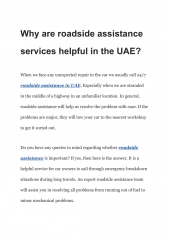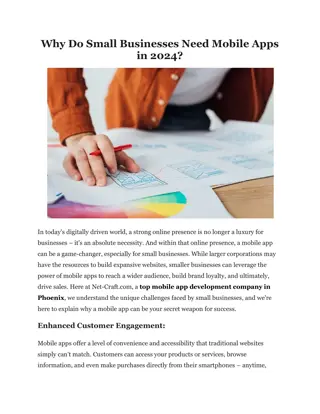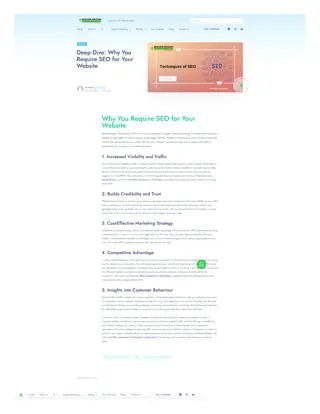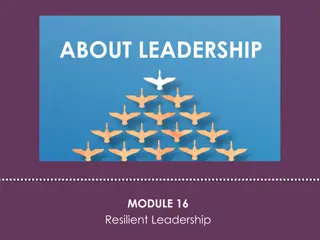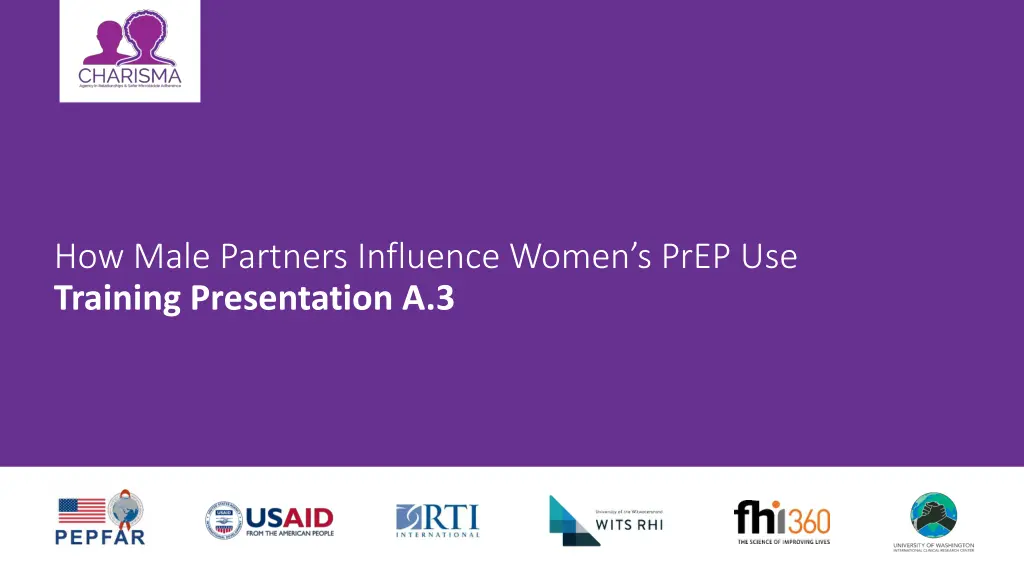
Understanding How Male Partners Influence Women's PrEP Use
This training presentation explores the impact of male partners on women's PrEP (Pre-Exposure Prophylaxis) usage, discussing reasons why women choose to disclose or not disclose their PrEP usage to their partners. It also delves into potential male partner roles ranging from opposition to active support in women's PrEP use decisions.
Download Presentation

Please find below an Image/Link to download the presentation.
The content on the website is provided AS IS for your information and personal use only. It may not be sold, licensed, or shared on other websites without obtaining consent from the author. If you encounter any issues during the download, it is possible that the publisher has removed the file from their server.
You are allowed to download the files provided on this website for personal or commercial use, subject to the condition that they are used lawfully. All files are the property of their respective owners.
The content on the website is provided AS IS for your information and personal use only. It may not be sold, licensed, or shared on other websites without obtaining consent from the author.
E N D
Presentation Transcript
How Male Partners Influence Womens PrEP Use Training Presentation A.3
Zethu and Sipho Remember Zethu and Sipho? What did we learn about the role of male partners in positively and negatively influencing women s PrEP use?
Why do woman choose to tell their male partners they are using PrEP? Emotional, logistical, and strategic reasons Promote an open, trusting relationship or prevent a disagreement/breakup Gain partner support in case they later experience side effects or other problems The right thing to do, because their partners would also be exposed to the product Logistics of product use may be difficult to keep secret
Why do women choose not to tell their male partners they are using PrEP? They worry their partner may not be supportive They worry their partner will not feel trusted They worry their partner may start sleeping around They worry their partner may ask or force them to stop using PrEP They worry their partner may be violent They don t feel the need to share the decision with their partner, especially for more casual relationships
How do women decide to tell their male partners they are using PrEP? Is our relationship serious enough to tell him? How will he react? How would he react if he found out later?
Potential male partner roles in womens PrEP use Opposition: Ranging from voicing unease to refusal Concerns about product safety and potential partner infidelity Lack of knowledge about the product Not wanting partners to use something beyond their control Agreement/non-interference: Some gave permission or did not interfere Active support: Demonstrated through: Provision of practical or emotional support to take PrEP Reminding their partners to take PrEP daily Reminding partners of appointments, occasionally accompanying them, or giving them transport money Most men fall in the agreement/non-interference part of the continuum.
Other key points from research in South Africa 1. Some men thought their female partners were using PrEP because they had other sexual partners or did not trust him. 2. Women wanted their male partners to get tested for HIV, use HIV protection, and attend couples counseling. 3. Men were resistant to being HIV tested. They were happy for their female partners to get tested and thought that if their partner was negative, they must also be negative. 4. Men wanted more information about PrEP, and some wanted to speak directly to health care providers, but it was difficult to get men to come to the clinic. 5. Relationships had a lot of conflict (finances, infidelity, social outings/alcohol use). Jealousy was common, lots of mistrust from both partners. 6. Women who were under age 27 or had a new partner in the last three months were more likely to experience negative consequences from using PrEP.
Discussion Questions? Reflections: Was any of the information surprising? What strikes you as some of the most important research findings? 8
Sources 1. World Health Organization. Global and regional estimates of violence against women: prevalence and health effects of intimate partner violence and non-partner sexual violence. Geneva, Switzerland: WHO; 2013. 2. Dunkle KL, Jewkes RK, Brown HC, Gray GE, McIntryre JA, Harlow SD. Gender-based violence, relationship power, and risk of HIV infection in women attending antenatal clinics in South Africa. Lancet. 2004;363(9419):1415-1421. 3. Pronyk PM, Hargreaves JR, Kim JC, et al. Effect of a structural intervention for the prevention of intimate-partner violence and HIV in rural South Africa: a cluster randomised trial. The Lancet. 2006;368(9551):1973-1983. 4. Malow RM, Ziskind D, Jones DL. Use of female controlled microbicidal products for HIV risk reduction. AIDS Care. 2000;12(5):581-588. 5. Jennings T, Lucenko B, Malow R, Devieux J. Audio-CASI vs interview method of administration of an HIV/STD risk of exposure screening instrument for teenagers. Int J STD AIDS. 2002;13(11):781-784. 6. Minnis AM, Padian NS. Effectiveness of female controlled barrier methods in preventing sexually transmitted infections and HIV: current evidence and future research directions. Sex Transm Infect. 2005;81(3):193-200. 7. Stein ZA, Myer L, Susser M. The design of prophylactic trials for HIV: the case of microbicides. Epidemiology. 2003;14(1):80-83; discussion 83-84. 8. Stadler J, Delany-Moretlwe S, Palanee T, Rees H. Hidden harms: women s narratives of intimate partner violence in a microbicide trial, South Africa. Soc Sci Med. 2014;110C:49-55. 9. Kacanek D, Dennis A, Sahin-Hodoglugil NN, et al. A qualitative study of obstacles to diaphragm and condom use in an HIV prevention trial in sub- Saharan Africa. AIDS Educ Prev. 2012;24(1):54-67. 10. Kacanek D, Bostrom A, Montgomery ET, et al. Intimate partner violence and condom and diaphragm nonadherence among women in an HIV prevention trial in Southern Africa. J Acquir Immune Defic Syndr. 2013;64(4):400-408. 11. Jewkes R, Levin J, Penn-Kekana L. Gender inequalities, intimate partner violence and HIV preventive practices: findings of a South African cross- sectional study. Soc Sci Med. 2003;56(1):125-134. 12. Lanham M, Wilcher R, Montgomery ET, Pool R, Schuler S, Lenzi R, Friedland B. Engaging male partners in women s microbicide use: evidence from clinical trials and implications for future research and microbicide introduction. J Int AIDS Soc. 2014;17(3 Suppl 2):19159. doi: 10.7448/IAS.17.3.19159.




